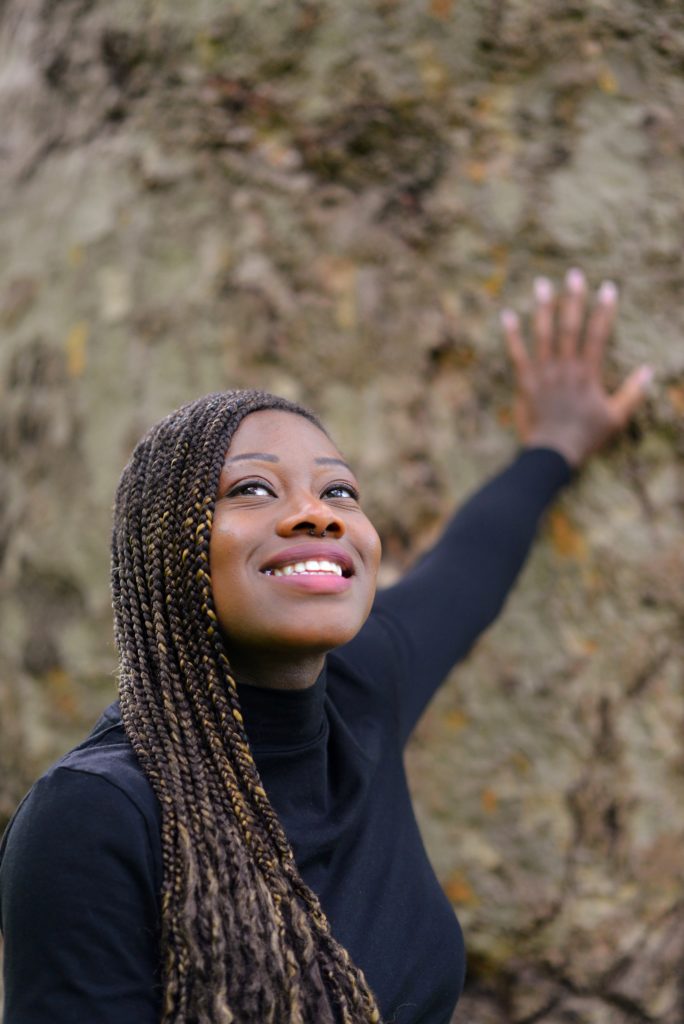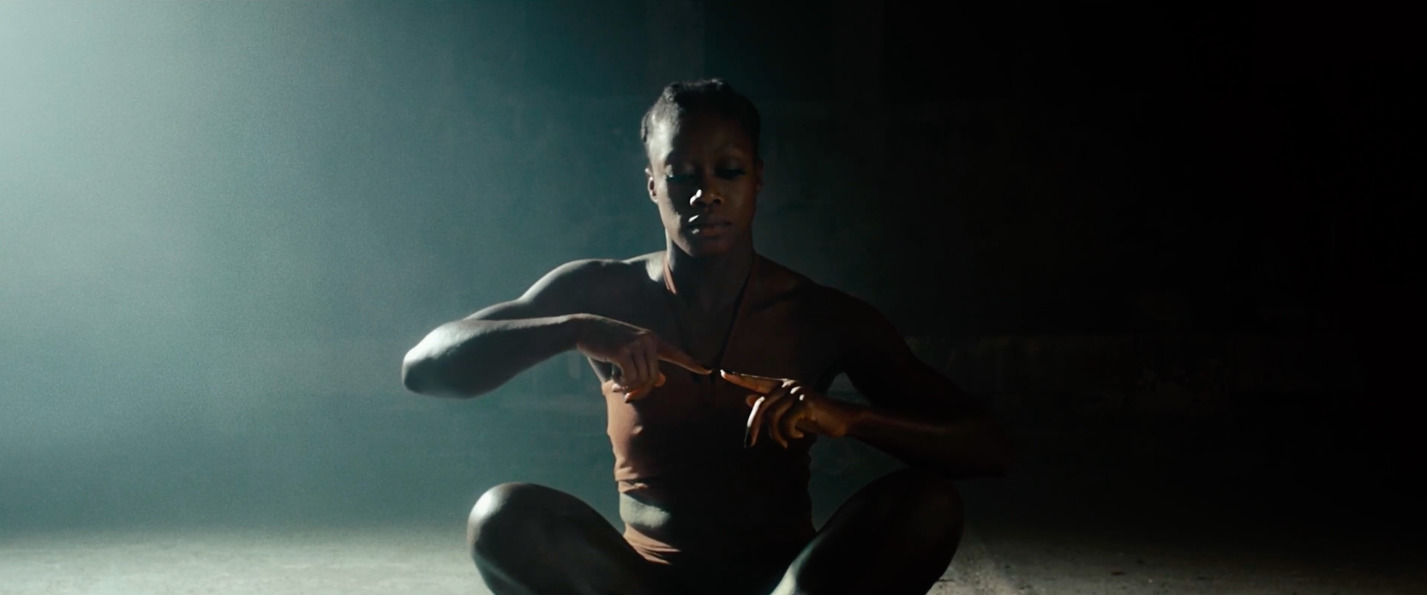Words by So’l Jelenke. This article is part of our REWRITE series with CDS Artist Community.
Is the dance industry an environment that prioritises care? And if it isn’t, what needs to change?
Care is something I am familiar with. I grew up having the responsibility of caring for a sibling who is differently-abled and non-verbal. I also have a chronic health condition that requires me to spend more time caring for my body.
I have been able to develop a positive relationship with my body and my sibling through dance and movement. From pain management to regulating the central nervous system and non-verbal communication, movement and dance have brought me healing, connection and joy. I translated this experience into a piece called Temple, a moving picture using the body and movement as primary communication to address themes on body image, wellness and relationship with the self.
Dance is sacred
As one of the most primal communication languages, forms of expression and survival techniques, dance and movement are integral to human wellbeing, rooted in religious rituals and spirituality.
Before dance became the industry we see today, as far back as 8000BC there is documentation of dance being practiced in religious worship and spiritual ceremonies, used as a portal to connect humans with the grandiosity of the universe and spiritual beliefs. Outside of performance, dance is used for its healing benefits i.e., stimulating mind-body harmony and activating transcendence through primal dancing. It is pure pleasure for many people.
Yet, due to a myriad of reasons including government austerity, lack of funds and devaluing of the arts, the dance industry has become commercialised to the point of exploitation and objectification being the norm. The inherent benefits of such work are then lost due to a culture lacking in care. From Strictly scandals and Super Bowl call outs to personal accounts told to me directly, dancers have been commodified for entertainment purposes in ways that reduce the sacredness of the art.

Care is compromised
American dancer and activist Taja Riley states that dancers are not simply background dressers but in fact artists, athletes and creative collaborators. Whether you’re at the theatre, enthralled by a slick music video, witnessing a street performance or taking a class, the work of a dancer is one that contributes directly to the richness and wellbeing of societies. So, why isn’t more done to support dancers’ wellbeing? Many dancers start off eager and passionate yet end up burnt out, discouraged or, all too commonly, injured. We’re also seeing dancers switch from performance to some adjacent art practice, or leave the industry altogether for more stable, lucrative work.
With the precarity of work affecting the majority of professional dancers (although mostly freelancers), the common practice of being underpaid and overworked by commissioners exemplifies the lack of care for dancers as individuals and undermines them as individual business owners. In many cases dancers are expected to work for free for the generous offer of ‘exposure’ without a guaranteed amount of individual coverage, promotion or accreditation.
Unfortunately, the biggest culprits are usually larger organisations. Such organisations maintain powerful positions in the industry, setting a standard upheld by those in long-standing positions of authority who perpetuate outdated work cultures void of centering care. The past 14 years of a right-wing Tory government that held the arts in contempt did nothing to progress matters.
What are the solutions?
The physical demands of having to rely on your body to make work, the resilience needed for cut-throat auditions and job precarity mean that care is not something that can come second to the work, it should come with the job.
Necessary targeted solutions are emerging such as Ameena Hamid and Grace Dickson’s HD General Management built on a “non-negotiable foundation of care and inclusion” for the arts, and Nadine Page’s The Creative Well, the mental health service specifically for creatives administered by practitioners who are also creative experts.
Chisenhale Dance Space, an organisation existing since the 80s with a nation-wide community of dancers and artists identifying as marginalised or of global majority heritage, whose artist committee I currently sit on, is an organisation with care embedded in its guiding principles. Chis (as I like to call it) provides education on mental-health, anti-racism and anti-ableism, and encourages the radical, free-thinking of its community to challenge harmful industry culture to bring about changes necessary within dance practice.
Develop personal care rituals
But change takes time. Dancers need to prioritise their health and wellbeing by developing personal care rituals that they stand by in ways that challenge the industry and educate ignorant (at times) commissioners. And enough dancers need to share this value in order for it to have the impact needed to shift the landscape.
I encourage dancers and performers to develop, or maintain, self care rituals that allow for a different relationship with dance and their bodies through alternative practices. One that returns to spiritual, older traditions where the rewards of movement can be had outside of the pressures of rehearsals, performance, the next job or even creation.
Ecstatic Dance London is a space designed with care at its core. Anyone can attend a session of free-dancing to a live DJ and percussionist with a group of professional and non-professional dancers who just want to move. Events are designed to foster community with consensual hugs and group dancing, as well as a deeper connection with yourself with guided meditation and cacao. Attending these dances is a personal self-care ritual of mine I can’t recommend enough. It’s so much fun.
As a collective effort and shared responsibility, individuals in positions of leadership such as teachers, facilitators and choreographers can ensure their duty of care by adopting the mindset of a carer. Here, authority lies not just in commanding a space, but holding it delicately, intentionally protecting the wellbeing of dancers who offer themselves to their knowledge and direction.
I witnessed an interesting example of this attending a Capoeira class where a ‘healer’ sat to the side holding space silently yet authoritatively, protecting the capoeiristas from the energy they were unconsciously conjuring from engaging in the centuries’ old spiritual art of the practice now recognised as an official sport. Capoeira is derived from enslaved Africans in Brazil.
Our bodies have a deeper wisdom. We instinctively know when we’re being mistreated. As movers and dancers, our connection to our bodies tunes us to the energy and messages it carries and communicates. We must, then, advocate for the care of ourselves and others to preserve the inherent benefits of dance, one of the oldest and most natural ways of being.
Dancers, we must prioritise care until one day the wider dance culture shifts. I believe the way to do this is through re-establishing our relationships with dance and movement outside of the working environment in a way that feeds back into how we care for ourselves in a profession that both gives and takes so much physically and mentally. This won’t be easy given the nature of freelancing, but we must continue to come together and support each other to stand for change.
Dancers, use your power by reclaiming the thing people in power are trying to claim for themselves.
